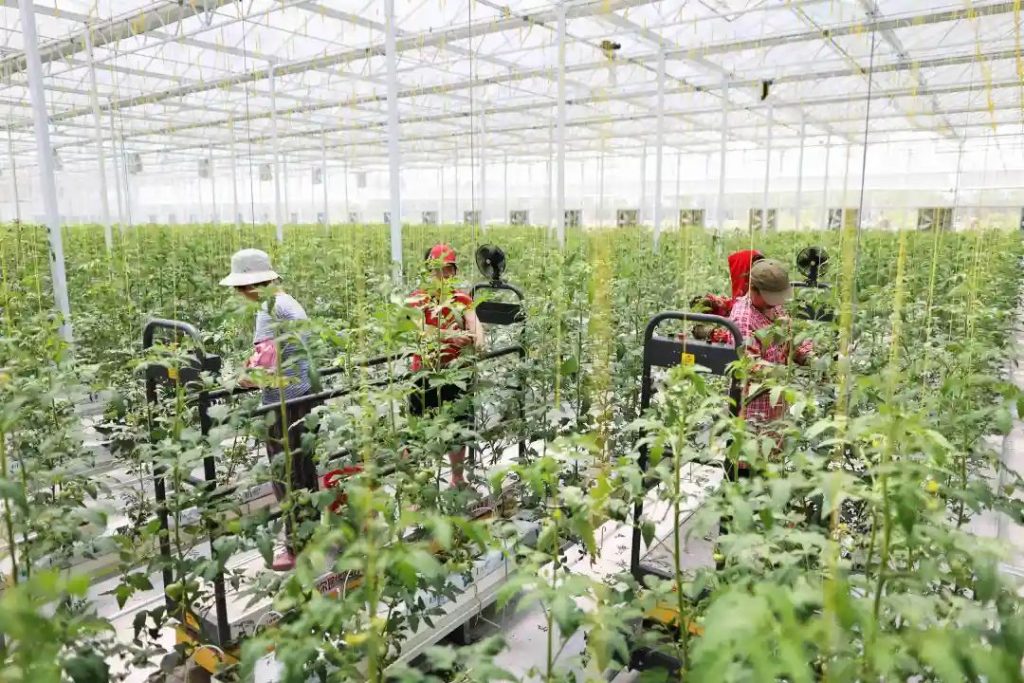
1. Technical overview
(1) Basic information
The light, simple and high-efficiency production technology of perennial rice is a new type of rice production technology that can be harvested continuously for more than 2 seasons at one planting time by planting artificially cultivated rice varieties that can germinate normally and regenerate seedlings under natural production conditions. High-efficiency, light and simple rice production methods are of great significance for stabilizing rice planting area and improving rice planting efficiency. This technology can realize a kind of double harvest in Hunan, Jiangxi and other double-cropping rice areas, and can realize a kind of multi-harvest in Yunnan, Guizhou, Guangxi, Guangdong and other overwintering regions. At present, varieties such as perennial rice 23 (PR23), Yunda 25, and Yunda 107 have passed the approval of crop varieties.
(2) Demonstration situation
Since 2017, the technology has been tested and demonstrated in seven southern provinces (regions) including Yunnan, Guizhou, Guangdong, and Guangxi, and has been promoted and applied to more than 100,000 mu, showing wide adaptability.
(3) Improvement of quality and efficiency
This technology saves production links such as sowing, seedling raising, soil preparation, and transplanting without substantially reducing the output, saves production costs, reduces labor input, reduces labor intensity, and improves rice planting efficiency. According to statistics, this technology saves 5-6 labor per mu, can save costs and increase income by 500-600 yuan, and has remarkable economic, social and ecological benefits.
2. Technical points
(1) Optimal species. Perennial rice varieties are selected, and the amount of seeds per mu is generally about 3 kg.
(2) Seedling raising and transplanting (the first season). In the first season, the dry seedling raising method was adopted to cultivate strong seedlings, and the seedling strengthening agents were selected according to local conditions. The basic seedlings for transplanting are 1.1-20,000 holes/mu (or the same as the local conventional rice transplanting density), 2-3 seedlings per hole. Every subsequent season, the rice piles are kept after harvest.
(3) Moisture management. Inch water living tree (bud promotion): within 10 days after transplanting in the first season, and within 10 days after the initial arrangement of the regenerated rice piles, the field should maintain a water layer of about 1 inch. Shallow water tillering: Seedlings turn green in the first season to the peak tillering stage, and seedlings emerge in the regeneration season (1-2 seedlings in single hole rice piles) to the peak tillering stage. The field maintains a water layer of about 1-2 cm, which is conducive to early and rapid tillering. Enough seedling drying: In the first season and regeneration season, when the number of tillers reaches about 75% of the target effective panicle number, the field starts to control water and dry the field. There is water at the jointing and long earing stage: every production season at the jointing stage, the young panicle differentiation stage, and the heading and flowering stage maintain a 2-3cm water layer in the field. After the wax is ripe, dry the field to protect the roots and promote buds: every season after the wax ripening period (about 15 days after the full ear), remove the water and dry the field. Overwintering period: In areas with irrigation conditions, the field plots should maintain a 2-3cm water layer; in areas with poor irrigation conditions, the soil should be kept moist.
(4) Fertilizer logistics. The recommended amount of pure nitrogen per mu is 12kg (including root-protecting and germination-promoting fertilizer), and the ratio of nitrogen, phosphorus, and potassium is 2:1:2. In the first season, nitrogen fertilizer is applied according to the ratio of basal fertilizer, tillering fertilizer, panicle fertilizer and root-preserving germination-promoting fertilizer in a ratio of 2:3:2:3, all phosphorus fertilizers are used as base fertilizer, and the ratio of potassium fertilizer to basal fertilizer, ear fertilizer and root-guaranteed fertilizer is 4:4 :2 application. In the regeneration season, the nitrogen fertilizer is applied according to the ratio of bud fertilizer (base fertilizer), tillering fertilizer, ear fertilizer, and root-keeping and bud-keeping fertilizer in a ratio of 1:4:2:3. The ratio is 4:4:2 application. The germination-promoting fertilizer (base fertilizer) should be applied to the new seedling Changbaigen (three leaves and one heart) of the rice pile.
(5) Stubble height. When the early rice is harvested in the double-cropping rice area, the height of the reserved rice pile is 5-10 cm, and the height of the reserved rice pile is 20-30 cm when harvested in the double-cropping rice area and the single-cropping rice area.
(6) Overwintering management. Vegetables or green manure can be interplanted during the wintering period. In areas with irrigation conditions and no frost, keep the water layer of 2-3cm in the field; in areas with poor irrigation conditions, keep the soil moist. After overwintering, cut off the rice pile according to the local early rice transplanting time, and keep the height of the rice pile at about 5cm. Also use herbicides to control weeds.
(7) Weed control. Apply conventional herbicides to control weeds 5-7 days after transplanting or rice seedling emergence, and use herbicides for pre-emergence sealing 2 days after harvest. For soil treatment, use promethazine or benzyl. B to control gramineous weeds; broad-leaved weeds and sedges, and spray with cyhalofop, bispyriben, and penoxsulam. For perennial weeds, use sprays such as cyhalofop, bentazone, and fluroxypyr.

没有reply内容